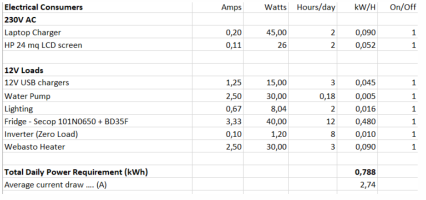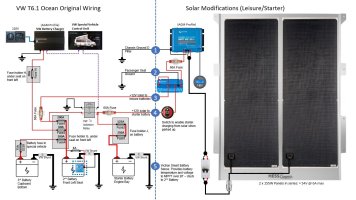pluc99
Lifetime VIP Member
I installed and can recommend the solution from the @WelshGas post above. By extended, he refers to the fall and winter months.Thanks , what mean by extended.
So if was going for say max of 7 nights .
The first 2 days would run of fully charged batterys.
So for further 5 nights , would that be extended an I need 2 panels .?
Is that 2 x 120 watts
The idea is to have the solar panels charge the leisure batteries during the day so you will start every evening with a 100% charge. That way you can be off grid for as long as your panels get enough sunshine during the day.
Normally a single 100W panel should be enough in ideal summer conditions, when the sun is shining all day, the temperature is moderate and the panels are positioned at the ideal angle to the sun.
Conditions are not ideal outside of the summer months, which is why I you should install 2x100W panels. In the above recommended solution, you could add a third 100W panel anytime later if it turns out that 2 panels aren't delivering enough charge.
















